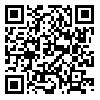Volume 12, Issue 5 (2021)
LRR 2021, 12(5): 205-237 |
Back to browse issues page
Download citation:
BibTeX | RIS | EndNote | Medlars | ProCite | Reference Manager | RefWorks
Send citation to:



BibTeX | RIS | EndNote | Medlars | ProCite | Reference Manager | RefWorks
Send citation to:
Allami H, Ghasemi M, Barzegar N. A Pragmalinguistic and Sociopolitical Analysis of Vague Language in Two Iranian Presidents’ International Interviews. LRR 2021; 12 (5) :205-237
URL: http://lrr.modares.ac.ir/article-14-47781-en.html
URL: http://lrr.modares.ac.ir/article-14-47781-en.html
1- Associate Professor, Department of English Language Teaching, Tarbiat Modares University, Tehran, Iran , h.allami@modares.ac.ir
2- PhD Candidate, English Department, Faculty of Languages and Literature, Yazd University, Yazd, Iran
3- MA, English Department, Faculty of Languages and Literature, Yazd University, Yazd, Iran
2- PhD Candidate, English Department, Faculty of Languages and Literature, Yazd University, Yazd, Iran
3- MA, English Department, Faculty of Languages and Literature, Yazd University, Yazd, Iran
Abstract: (1636 Views)
Standard political discourse is replete with ambiguity and vagueness. Politicians frequently use vague language to hide their inadequate knowledge, show their low interest in the issue, and/or evoke emotion. This study reports on a qualitative content analysis of vagueness in two Iranian presidents' political interviews within a pragmalinguistic and sociopolitical paradigm. The data consisted of nine question-answer exchanges extracted from seven internationally live broadcast interviews. A total of 57 instances of vague language use were analyzed in terms of 21 pragmalinguistic vagueness strategies. Implications are that vagueness in political discourse is motivated by a multiplicity of factors such as face management, sociopolitical and situational adaptation, conflict avoidance, and personal characteristics of the interviewers and the respondents. Vagueness was also found to be a sign of diplomatic prudence or wisdom.
Send email to the article author
| Rights and permissions | |
 |
This work is licensed under a Creative Commons Attribution-NonCommercial 4.0 International License. |









